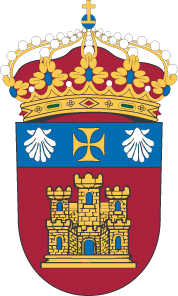Por favor, use este identificador para citar o enlazar este ítem: http://hdl.handle.net/10259/7422
Título
Deformational behavior of self-compacting concrete containing recycled aggregate, slag cement and green powders under compression and bending: Description and prediction adjustment
Autor
Publicado en
Journal of Building Engineering. 2022, V. 54, 104611
Editorial
Elsevier
Fecha de publicación
2022-08
ISSN
2352-7102
DOI
10.1016/j.jobe.2022.104611
Zusammenfassung
The high fine-aggregate content of Self-Compacting Concrete (SCC) means that its deformational
behavior differs from that of vibrated concrete. SCC performance is further altered when industrial by-products are used as raw materials in those fractions. In this paper, the aim is to analyze
and to model the deformational behavior under compression and bending of SCC containing
100% coarse and 0%, 50%, and 100% fine Recycled Aggregate (RA), limestone and RA green
aggregate powders sized 0/0.5 mm, and Ground Granulated Blast-furnace Slag (GGBS) cement.
After the fresh and mechanical characterization of the 18 SCC mixes that were produced, their
compressive stress-strain and bending load-deflection curves were determined by continuously
recording the applied load and the strain/deflection values of the SCC test specimens. 100%
coarse RA yielded deformability levels in accordance with international standards, while higher
fine RA contents increased deformation under compression and reduced it under flexural stress.
SCC stiffness increased when GGBS was added, due to the adjustment of the proportion of
cementitious matrix, while the use of limestone powder and, especially, RA powder had the
opposite effect. Both compressive strain and flexural deflection were underestimated with
existing theoretical models. However, the incorporation in the models of both exponential
correction coefficients, dependent on the fine RA content, and partial adjustment coefficients,
dependent on the types of cement and aggregate powder, produced optimal fits with the experimental stress-strain and load-deflection curves. In view of the deformational behavior, which was
successfully modelled with maximum deviations of ±10%, fine RA may be used in combination
with GGBS and limestone powder, although it is recommended that fine RA should not exceed
proportions of 50%.
Palabras clave
Recycled aggregate self-compacting concrete
Ground granulated blast-furnace slag
Green aggregate powder
Stress-strain/load-deflection curve
Deformational-behavior prediction model
Materia
Ingeniería civil
Civil engineering
Versión del editor
Aparece en las colecciones
Documento(s) sujeto(s) a una licencia Creative Commons Attribution-NonCommercial-NoDerivatives 4.0 Internacional











